Studies On Residential Power Line Noise - Part 7: HiFi Tuning and Isoclean Fuses

DarqueKnight
Posts: 6,765
Introduction
I first tried some Isoclean audio grade fuses in January of 2008 (Isoclean Review). I replaced the 12 amp power line fuses in my Parasound Halo JC 1 monoblock amplifiers. I am far more impressed with these fuses now than then. The AC power infrastructure and vibration abatement improvements implemented in the fall of 2008 provided new levels of resolution that made the benefits of these fuses more apparent.
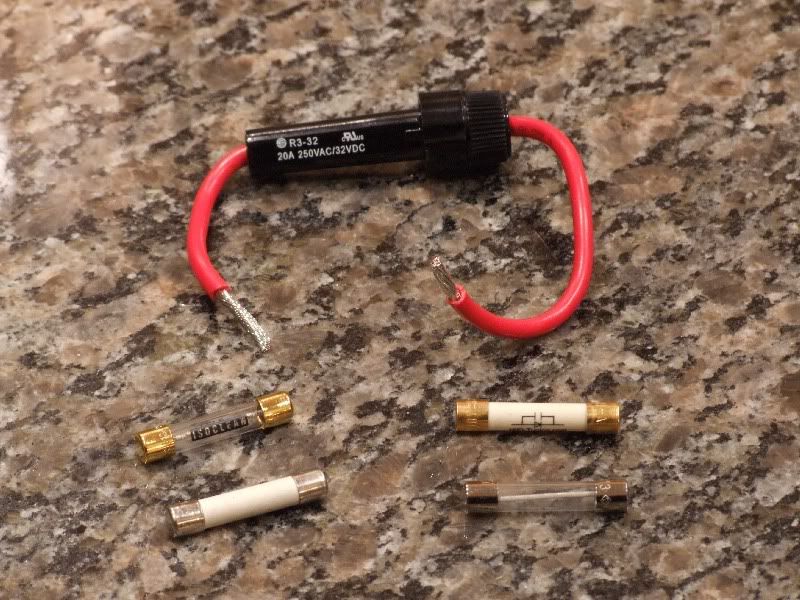
Isoclean fuse at top left and HiFi Tuning fuse at right. Their stock counterparts are below them.
Although the power amp fuses are the same, my audio power infrastructure is vastly different. In January of 2008, I did not have multiple dedicated AC circuits, multiple passive AC conditioners, an AC regenerator, and low noise power cords. I did not start AC infrastructure upgrades until August of 2008.
Now, switching back to the stock power amp fuses was the visual equivalent to going from a well lit room to dimming the lights a quarter way down. Tactile sensation and sound stage width and depth was also significantly reduced.
Oscilloscope measurements revealed that these fuses are actually noise filtering/power conditioning devices in addition to protection devices. I speculate that the manufacturers of audio grade fuses do not describe them as power conditioning devices because:
1. They would have to describe the proprietary filtering mechanism in more detail than they care to.
2. Classifying the fuses as power conditioning devices would add another layer of regulatory approval (and more costs to the manufacturer).
Both the HiFi Tuning and Isoclean fuses have arrows on their cases which indicate that they should be oriented in the direction of current (energy) flow. Some people have scoffed and ridiculed the idea of "directional" AC fuses. Rather than something to ridicule, I saw the arrows as indications that there was something going on inside the "fuses" that required a specific orientation. Initially, my ears told me that the fuses sounded better in the direction of the arrows than against it. Noise spectrum measurements with an oscilloscope verified that the line noise was lower in the direction of the arrows than against it.
I sent the following email to HiFi Tuning's offices in Germany:
I tried a 0.5 Amp Hifi Tuning fuse in my Pass Labs Xono phono preamp and Pass Labs X0.2 line level preamp. The results were spectacular.
Listening tests confirmed that the best, most detailed, most open sound was achieved when the fuses were installed with the logo pointing in the direction of current flow.
I also took some noise spectrum measurements with an oscilloscope and I definitely saw more power line noise after the fuse when it was installed with the logo pointing against the current flow.
The resistance of the fuse measured the same in both directions.
What is it about the Hifi fuse's construction that makes it directional?
I received this response the same day:
Thanks for the Feedback,
Please understand that a magician never tell anybody his tricks....;.-)
But be sure that we made the best fuses on the planet, nobody can make it better!!!
Regards,
Bernd Ahne
I sent the following email to Isoclean's offices in Hong Kong:
"What is the electrical theory behind the reason why the IsoClean fuses need to be installed in one direction for best sound quality?"
I received this reply:
Dear Sir,
The meaning is same as arrow direction in signal cables. Always want to keep same direction as indicated. Hope you understand.
Regards
Isocleanpower
The only thing I understood from Isoclean's response was that they just wanted me to go away.
Fortunately, as a result of my power line noise reduction research, I had become aware of physicist Jack Bybee's pioneering research in materials-based noise reduction using special metal oxides and ceramics. His research was focused primarily on "quantum purifiers" which reduced noise at the quantum level rather than the gross level (RF, EMI). Bybee filters are used in every aspect of high end audio gear, from speakers, to amps, to source components to turntable motors. My Teres Reference II turntable motor uses Bybee noise filters. It is apparent that these audio grade fuses employ Bybee or a similar materials-based noise reduction technology. The interested reader can find further information on this fascinating technology at the Bybee Technologies Website and numerous other online resources. Just do a search on "Jack Bybee", "Bybee purifier", or "quantum purifier".
A lot of HiFi Tuning's website is in German, but I was able to glean enough information to tell that they are heavy into materials-based noise reduction products.
Better Understanding
At the time of my initial purchase of Isoclean audio grade fuses in January of 2008, I did not have a good understanding of what they were doing. I clearly heard improvements and I also heard the fuse's better performance in one direction than the other. It was only after I took noise spectrum measurements that I came to realize that these devices, rather than being mere "fuses", are actually noise gates and resolution enhancement devices. Accordingly, in an audio system with appropriate resolution capability, they provide benefits well in excess of their cost. I was initially stung by what I considered to be high prices for these "fuses" ($25 to $45). Now, in light of what they actually do, and my better understanding of noise reduction science, I realize they are one of the most effective low cost resolution enhancement tweaks you can buy. Please be aware that, as with any electrical noise reduction device, your results will vary according to your associated equipment and power line quality.
Listening Evaluation
The improvements that the Isoclean fuses brought to my power amps were very obvious. The improvements that the HiFi Tuning fuses brought to my line level and phono preamps were transformational, with respect to sound stage width and depth, dynamics, overall detail and tactile sensation, with the phono preamp benefiting more so than the line level preamp. The phono preamp has a much lower noise characteristic than the line level preamp. This makes noise reductions, even small ones, easier to discern.
Replacing the stock 1A wire wound fuse in my Pass Labs X0.2 preamp with a HiFi Tuning fuse resulted in a dramatic improvement in sound stage dimensions and quality as shown in figure 1.
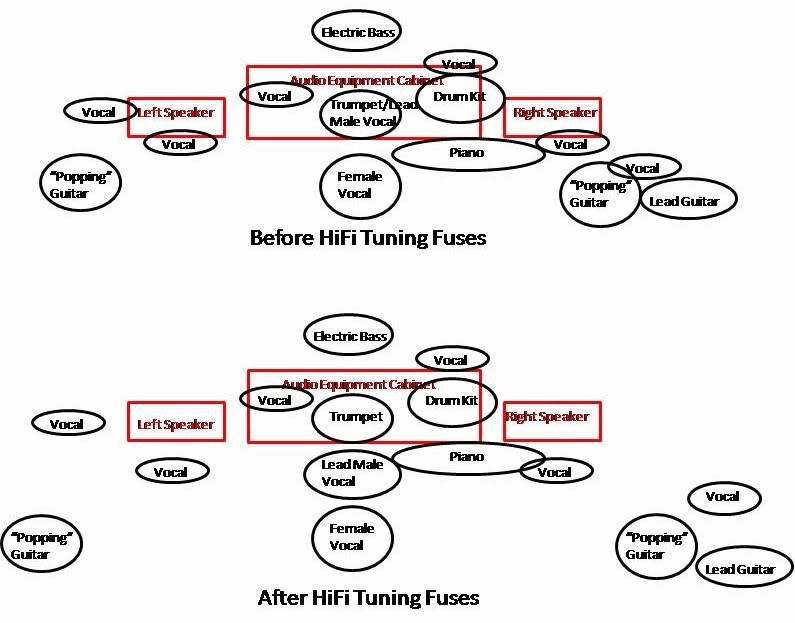
Figure 1. Sound stage dimension changes after preamp fuse upgrade.
Figure 1 shows the changes in instrument and vocal locations before and after the HiFi Tuning fuse installation for the CD version of the song "Funkin' For Jamaica (NY)" by trumpeter Tom Browne (released in 1980).
"Funkin' For Jamaica (NY)" comprises a layered mix of well recorded and spatially stable audio images. The band members engage in dialog talking about events from their everyday lives in Jamaica, New York as well as comments about the physical attributes of the female vocalist and comments about trumpeter Tom Browne's personality and his dedication to music. The band member's voices are scattered across the sound stage.
Under everything is a constant, heavy, growling electric bass beat. On the left and right of the sound stage are identical constant "popping" effects which sound like they are made by a guitar, but it might have been a synthesizer since a synth is listed in the song's instrumentation list. There is an electric lead guitar to the far right which only plays accent notes at the end of the vocalist's phrases.
Before
Before installation of the HiFi Tuning fuses in the Pass Labs X0.2 preamp, Tom's Browne's trumpet and the lead male vocalist shared the same space. The "popping" guitars, female vocalist and the lead electric guitar were 3 feet ahead of the speaker plane. There was a band member's voice coming from the space directly in front of each speaker.
After
Everything is apparently louder, certainly clearer and definitely more dynamic.
The female vocalist, popping guitars and lead guitar came forward 2 feet for a total of five feet ahead of the speaker plane.
The lead male vocalist now had his own clearly defined space between the female vocalist and the trumpet.
The band member's voice that was on the left edge of the left speaker was pushed to the left by 1 foot.
The band member's voices in front of each speaker were repositioned a foot further forward.
The vocal/popping guitar/lead guitar grouping on the right were repositioned 2 feet further to the right.
The electric bass growl was faster, more detailed, and much heavier...it was now more reminiscent of an animal's growl than that of an electric instrument...and had more textures. Individual bass notes had more clearly defined trailing edges and decay.
The popping guitar's pops were heavier, more sharply defined and more percussive.
I first tried some Isoclean audio grade fuses in January of 2008 (Isoclean Review). I replaced the 12 amp power line fuses in my Parasound Halo JC 1 monoblock amplifiers. I am far more impressed with these fuses now than then. The AC power infrastructure and vibration abatement improvements implemented in the fall of 2008 provided new levels of resolution that made the benefits of these fuses more apparent.

Isoclean fuse at top left and HiFi Tuning fuse at right. Their stock counterparts are below them.
Although the power amp fuses are the same, my audio power infrastructure is vastly different. In January of 2008, I did not have multiple dedicated AC circuits, multiple passive AC conditioners, an AC regenerator, and low noise power cords. I did not start AC infrastructure upgrades until August of 2008.
Now, switching back to the stock power amp fuses was the visual equivalent to going from a well lit room to dimming the lights a quarter way down. Tactile sensation and sound stage width and depth was also significantly reduced.
Oscilloscope measurements revealed that these fuses are actually noise filtering/power conditioning devices in addition to protection devices. I speculate that the manufacturers of audio grade fuses do not describe them as power conditioning devices because:
1. They would have to describe the proprietary filtering mechanism in more detail than they care to.
2. Classifying the fuses as power conditioning devices would add another layer of regulatory approval (and more costs to the manufacturer).
Both the HiFi Tuning and Isoclean fuses have arrows on their cases which indicate that they should be oriented in the direction of current (energy) flow. Some people have scoffed and ridiculed the idea of "directional" AC fuses. Rather than something to ridicule, I saw the arrows as indications that there was something going on inside the "fuses" that required a specific orientation. Initially, my ears told me that the fuses sounded better in the direction of the arrows than against it. Noise spectrum measurements with an oscilloscope verified that the line noise was lower in the direction of the arrows than against it.
I sent the following email to HiFi Tuning's offices in Germany:
I tried a 0.5 Amp Hifi Tuning fuse in my Pass Labs Xono phono preamp and Pass Labs X0.2 line level preamp. The results were spectacular.
Listening tests confirmed that the best, most detailed, most open sound was achieved when the fuses were installed with the logo pointing in the direction of current flow.
I also took some noise spectrum measurements with an oscilloscope and I definitely saw more power line noise after the fuse when it was installed with the logo pointing against the current flow.
The resistance of the fuse measured the same in both directions.
What is it about the Hifi fuse's construction that makes it directional?
I received this response the same day:
Thanks for the Feedback,
Please understand that a magician never tell anybody his tricks....;.-)
But be sure that we made the best fuses on the planet, nobody can make it better!!!
Regards,
Bernd Ahne
I sent the following email to Isoclean's offices in Hong Kong:
"What is the electrical theory behind the reason why the IsoClean fuses need to be installed in one direction for best sound quality?"
I received this reply:
Dear Sir,
The meaning is same as arrow direction in signal cables. Always want to keep same direction as indicated. Hope you understand.
Regards
Isocleanpower
The only thing I understood from Isoclean's response was that they just wanted me to go away.
Fortunately, as a result of my power line noise reduction research, I had become aware of physicist Jack Bybee's pioneering research in materials-based noise reduction using special metal oxides and ceramics. His research was focused primarily on "quantum purifiers" which reduced noise at the quantum level rather than the gross level (RF, EMI). Bybee filters are used in every aspect of high end audio gear, from speakers, to amps, to source components to turntable motors. My Teres Reference II turntable motor uses Bybee noise filters. It is apparent that these audio grade fuses employ Bybee or a similar materials-based noise reduction technology. The interested reader can find further information on this fascinating technology at the Bybee Technologies Website and numerous other online resources. Just do a search on "Jack Bybee", "Bybee purifier", or "quantum purifier".
A lot of HiFi Tuning's website is in German, but I was able to glean enough information to tell that they are heavy into materials-based noise reduction products.
Better Understanding
At the time of my initial purchase of Isoclean audio grade fuses in January of 2008, I did not have a good understanding of what they were doing. I clearly heard improvements and I also heard the fuse's better performance in one direction than the other. It was only after I took noise spectrum measurements that I came to realize that these devices, rather than being mere "fuses", are actually noise gates and resolution enhancement devices. Accordingly, in an audio system with appropriate resolution capability, they provide benefits well in excess of their cost. I was initially stung by what I considered to be high prices for these "fuses" ($25 to $45). Now, in light of what they actually do, and my better understanding of noise reduction science, I realize they are one of the most effective low cost resolution enhancement tweaks you can buy. Please be aware that, as with any electrical noise reduction device, your results will vary according to your associated equipment and power line quality.
Listening Evaluation
The improvements that the Isoclean fuses brought to my power amps were very obvious. The improvements that the HiFi Tuning fuses brought to my line level and phono preamps were transformational, with respect to sound stage width and depth, dynamics, overall detail and tactile sensation, with the phono preamp benefiting more so than the line level preamp. The phono preamp has a much lower noise characteristic than the line level preamp. This makes noise reductions, even small ones, easier to discern.
Replacing the stock 1A wire wound fuse in my Pass Labs X0.2 preamp with a HiFi Tuning fuse resulted in a dramatic improvement in sound stage dimensions and quality as shown in figure 1.

Figure 1. Sound stage dimension changes after preamp fuse upgrade.
Figure 1 shows the changes in instrument and vocal locations before and after the HiFi Tuning fuse installation for the CD version of the song "Funkin' For Jamaica (NY)" by trumpeter Tom Browne (released in 1980).
"Funkin' For Jamaica (NY)" comprises a layered mix of well recorded and spatially stable audio images. The band members engage in dialog talking about events from their everyday lives in Jamaica, New York as well as comments about the physical attributes of the female vocalist and comments about trumpeter Tom Browne's personality and his dedication to music. The band member's voices are scattered across the sound stage.
Under everything is a constant, heavy, growling electric bass beat. On the left and right of the sound stage are identical constant "popping" effects which sound like they are made by a guitar, but it might have been a synthesizer since a synth is listed in the song's instrumentation list. There is an electric lead guitar to the far right which only plays accent notes at the end of the vocalist's phrases.
Before
Before installation of the HiFi Tuning fuses in the Pass Labs X0.2 preamp, Tom's Browne's trumpet and the lead male vocalist shared the same space. The "popping" guitars, female vocalist and the lead electric guitar were 3 feet ahead of the speaker plane. There was a band member's voice coming from the space directly in front of each speaker.
After
Everything is apparently louder, certainly clearer and definitely more dynamic.
The female vocalist, popping guitars and lead guitar came forward 2 feet for a total of five feet ahead of the speaker plane.
The lead male vocalist now had his own clearly defined space between the female vocalist and the trumpet.
The band member's voice that was on the left edge of the left speaker was pushed to the left by 1 foot.
The band member's voices in front of each speaker were repositioned a foot further forward.
The vocal/popping guitar/lead guitar grouping on the right were repositioned 2 feet further to the right.
The electric bass growl was faster, more detailed, and much heavier...it was now more reminiscent of an animal's growl than that of an electric instrument...and had more textures. Individual bass notes had more clearly defined trailing edges and decay.
The popping guitar's pops were heavier, more sharply defined and more percussive.
Proud and loyal citizen of the Digital Domain and Solid State Country!
Post edited by DarqueKnight on
Comments
-
With the stock fuses, the band member's conversation had just a hint of recording space natural reverberation. It almost sounded like they were standing outside talking. With the new fuses, the reverberant envelope around each speaker and each instrument (particularly the popping guitars) was clearly defined. Subtle echoes off the rear and sides of the recording space were greatly enhanced.
Tom Browne's muted trumpet had more metallic "bite" with a stronger, thicker, clearer tone.
I now heard a slight raspy edge in the female vocalist's Chaka Khan-ish voice that I had never noticed before.
Piano notes were heavier, had more decay and more natural "sparkle".
The drum kit licks were faster, better defined and more natural sounding.
All of the above was facilitated by the addition of a $40 "fuse". I say facilitated because the excellent improvements realized were due to a synergistic interaction of extensive power infrastructure tweaks rather than the effect of the HiFi Tuning fuse alone. For example, after listening with the X0.2's replacement fuse in place, I replaced the right power amp's Isoclean fuse with the stock ceramic fuse and heard the following:
1. The lead male vocalist went back to sharing the same space with the trumpet.
2. The female vocalist was repositioned at the edge of the speaker plane. Her raspy vocal edge was gone.
3. The reverberant characteristics of the images on the left of the sound stage were retained but the reverberant characteristics of the images on the right were greatly diminished or disappeared altogether.
4. The growling bass guitar lost a bit of speed and definition.
5. The right side of the sound stage sounded "darker" overall.
6. The right side of the sound stage contracted by 3 feet.
7. Overall tactile impact was diminished.
When listening to the "Take Five" track on the 180 gram pressing of Dave Brubeck's "Time Out" LP, replacing the Pass Labs Xono phono preamp's 0.5A stock wire wound fuse with a HiFi Tuning fuse resulted in the following improvements:
1. More subtle rumbling overtones on drums and acoustic bass.
2. Paul Desmond's alto saxophone shifted 1 foot to the right and 1 foot forward.
3. Saxophone notes had a more airy, reedy tone quality.
4. Piano notes had more weight and decay.
5. More bass slam.
6. Much sharper transients and more liquidity on rapid drum licks.
7. Much lower noise floor as evidenced by apparently louder sound level.
Replacing the JC 1 power amp's 1A stock wire filament rail fuses resulted in a further widening of the sound stage by two feet, a further lowering of the noise floor, and a small increase in detail and image weight.
In every case, the audio grade fuses sounded better than the stock fuses even when they were oriented the wrong way.
When I replaced the Cary CD 306 Professional Version SACD player ($8,000) with my Adcom GCD-750 CD player ($1,500), I heard the following changes:
1. Significant loss of tactile bass.
2. Bass growls were blurred. Rather than electric bass notes with the throaty, well defined rumble of a tiger's growl, the electric bass notes were now more similar to stomach rumblings.
3. Overall detail was diminished.
4. Sound stage depth and width significantly shrank (by 3 feet all around).
5. Bass seemed slower.
Now, I don't want to give the impression that the sound became "bad" when the Adcom replaced the Cary. It didn't. It was just less good by comparison, but still very, very, good.
Quantitative Analysis
A total of 16 fuses (8 stock fuses and 8 audio grade replacements) were evaluated: a 12A power line and two 1A rail fuses in each of the JC 1 power amps and 0.5A power line fuses in the Pass Labs X0.2 and Xono preamps. The differences seen in noise content between the stock and audio grade fuses was consistent. The oscilloscope used was a Tektronix TDS 2012.
The stock fuses are the slow blow type. Isoclean only makes slow blow fuses. HiFi Tuning makes both slow blow and fast blow fuses and offers a wider variety of current ratings than Isoclean.
The oscilloscope's Fast Fourier Transform noise spectrum plots in figures 2-6 follow the power signal as it comes from the PS Audio Soloist SE in-wall conditioner all the way to its exit from the JC 1's power line fuse. Both the stock ceramic fuses and the Isoclean fuses were compared.
The y-axis is the magnitude in dB and the x-axis is the frequency in Hertz. FFT measurements were taken with a Tektronix TDS 2012 digital oscilloscope. Starting at the y-axis and going from left to right the five large red spikes are: the DC component directly on the y-axis, the next and largest spike is the 60 Hz power signal, next is the 3rd harmonic at 180 Hz, next is the 5th harmonic at 300 Hz, last is the 7th harmonic at 420 Hz.
The 1-1/4" x 1/4" fuses were placed in a Radio Shack 20 Amp in-line fuse holder with 12 gauge stranded wire leads (part #270-1217). One fuse holder lead was plugged into the end of the power cable and the oscilloscope probe was connected to the other fuse holder lead. I did not use a fuse holder with the smaller 5mm x 20mm JC 1 rail fuses. Alligator clip leads were used.
The differences in the plots are easier to see if you save them to your hard drive and step through them.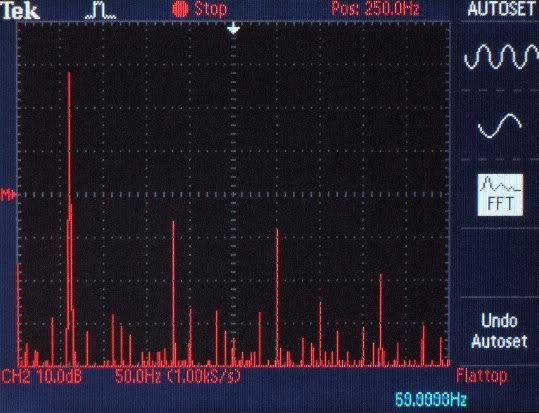
Figure 2. FFT of power signal from PS Audio Soloist in-wall passive
power conditioner.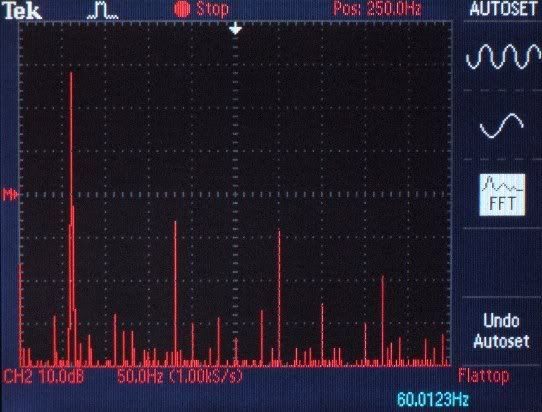
Figure 3. FFT of power signal from PS Audio xStream Premier SC
power cord.
The power signal FFT plot after the Premier power cord displays an overall flatter noise spectrum with slightly less amplitude in the 5th and 7th harmonic.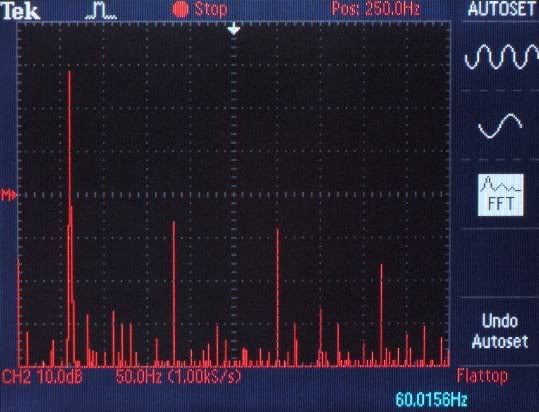
Figure 4. FFT of power signal from JC 1 power amp's stock Bussman
MDA ceramic power line fuse.
The power signal FFT plot from the JC 1's stock Bussman MDA ceramic power line fuse showed an increase in overall line noise, particularly at the 5th and 7th harmonic.
Figure 5. FFT of power signal from Isoclean fuse with fuse oriented
against current flow.
Inserting the Isoclean audio grade fuse in the reverse direction showed similar noise characteristics to the MDA ceramic fuse.
Figure 6. FFT of power signal from from Isoclean fuse with fuse
oriented with current flow.
Inserting the Isoclean fuse in the forward direction resulted in a further lowering of line noise amplitude and density over that provided by the Premier power cord.
Figures 7-9 show the FFT plots for the stock X0.2 preamp fuse and its HiFi Tuning replacement fuse.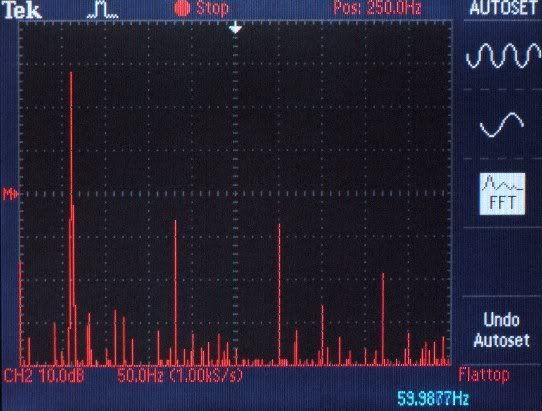
Figure 7. FFT of power signal from Littlefuse 313 fuse used in Pass
Labs X0.2preamp.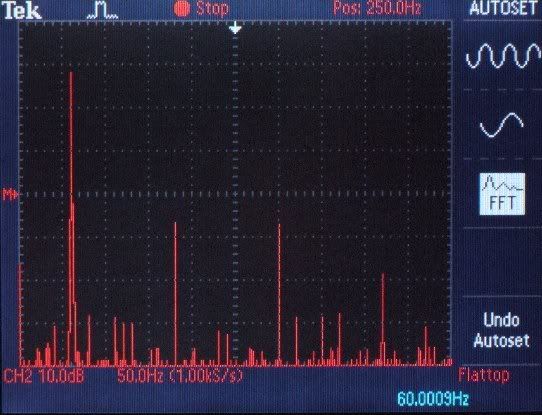
Figure 8. FFT of power signal from from HiFi Tuning fuse
oriented against current flow.
The HiFi Tuning fuse in the reverse direction displayed similar noise characteristics to the stock fuse.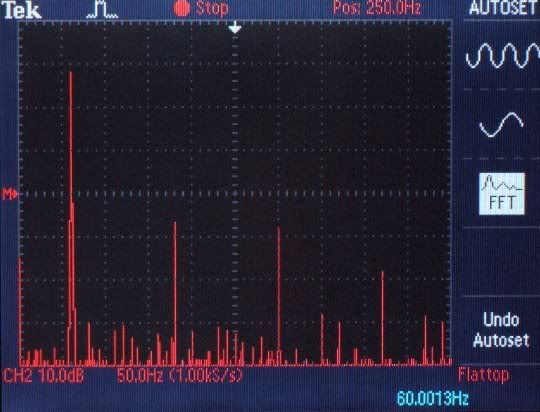
Figure 9. FFT of power signal from from HiFi Tuning fuse with fuse oriented
with current flow.
Orienting the HiFi Tuning fuse in the direction of current flow resulted in a significant reduction in noise amplitude.
In every report I have read where Isoclean and HiFi Tuning fuses were compared, the Isoclean fuses came out on top. I did not compare Isoclean and HiFi Tuning fuses in the same component. I would not have ordered the HiFi Tuning fuses were it not for the fact that Isoclean does not make a 0.5 Amp 1-1/4"x1/4" fuse. Comparing figures 6 and 9, the Isoclean and HiFi Tuning fuses have comparable noise amplitudes but the Isoclean fuse has overall lower noise density.Proud and loyal citizen of the Digital Domain and Solid State Country! -
Figures 7-9 showed the FFT plots for the stock X0.2 preamp fuse and its HiFi Tuning replacement fuse connected to the end of a Premier SC power cord which was connected to a Soloist in-wall power conditioner. Figures 10-13 show the FFT plots for the stock X0.2 preamp fuse and its HiFi Tuning replacement fuse connected to the end of a Premier SC power cord which was connected to a Power Plant Premier (PPP) AC regenerator. The spectacular improvements I heard after installing the HiFi tuning fuses in the X0.2 preamp and Xono phone preamps were attributable in part to the already exemplary low noise environment provided by the PPP. For a brief instant in time, I considered taking the PPP out of the power chain in order to hear just how much of a difference it was making. In the end, I just wasn't brave enough to do that. Besides, I wasn't going to listen to my preamps without the PPP, so why bother?

Figure 10. Power signal coming from the PPP through a Premier SC power cord.
Note the dramatic reduction in harmonic and other noise compared to that seen
in figures 2-9.
Figure 11. Power signal coming from the PPP/Premier SC power cord through the
stock Littlefuse 313 fuse.
Figure 12. Power signal coming from the PPP/Premier SC power cord through the
reversed HiFi Tuning fuse.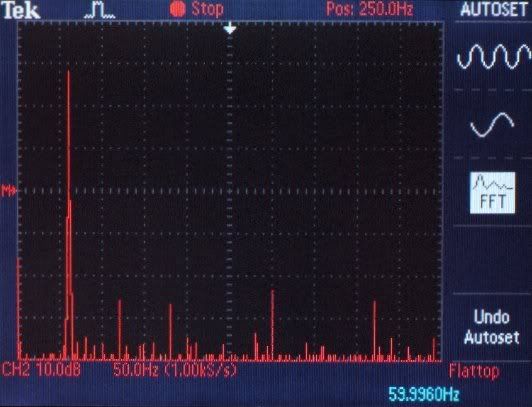
Figure 13. Power signal coming from the PPP/Premier SC power cord through the
properly oriented HiFi Tuning fuse.
Figure 11 shows a significant increase in noise density around 60 Hz when the stock Littlefuse is in place. The noise scenario with the reversed HiFi Tuning fuse (figure 12) is a little better than that of the stock fuse. Comparing figures 10 and 13, we see that the noise with the properly oriented HiFi Tuning fuse is significantly reduced in overall amplitude and density. No wonder it made Such Good Sound!
Figure 14. HiFi Tuning fuses and packaging.
Figure 15. Isoclean fuses and packaging.
Conclusion
Gross noise spectrum measurements such as the ones shown in this report provide some insight, but they cannot tell the whole story with respect to a device's noise characteristics. To get the total noise picture we would also need to look at noise at the molecular and atomic levels. Fortunately, such levels of measurement detail are not required because we can simply use our ears to tell if there is an improvement.
Generally, the better the electrical noise characteristics of the device, the better the results that will be heard. Loudspeakers are typically the noisiest components in the audio chain with their aggregate of thermal, vibrational, flicker, and shot noise. They usually benefit less from audio grade fuses. Low noise preamp's typically benefit the most, with power amp's coming next. In my system, the phono preamp benefited the most, the line level preamp was a close second, and the power amps were a distant third.
Audio grade fuses, being the tiny little devices they are, are better applied after more stringent noise reduction techniques have been applied. I think of them as "icing" rather than the "cake", with the cake being active and passive power conditioning devices.
Further Study
Future plans include replacing the power supply fuses in my Cary SACD player and Teres Audio turntable motor power supply. I asked Chris Brady of Teres Audio if he had experimented with audio grade fuses in his turntable power supplies. He replied that this is on his long list of things to try and that he looks forward to reading my results.
Some high end speaker manufacturers, as well as DIY'ers, use Bybee filters at their driver and/or binding post inputs. In the not too distant future, when I'm feeling brave enough to do further modifications to my speakers, I'll evaluate some Bybee purifiers in that application.
The only brands of audio grade fuses that I know of are Isoclean, HiFi Tuning, Furutech and PS Audio (Critical Link brand). Isoclean and HiFi Tuning manufacture their own fuses. PS Audio's fuses are made by a German company called AHP. Furutech's fuses are made by a Swiss company whose name they don't care to divulge. There are English language audio press and consumer reviews of the Isoclean and HiFi Tuning fuses. I did not find any audio press reviews of the Critical Link fuses, but there are some consumer reviews on various forums. The Furutech fuses have been reviewed by a couple of Japanese audio magazines and there are some consumer reviews on various forums. I'm sure that, in due time, someone will do a proper audio grade fuse "shootout" similar to the excellent audio grade capacitor shootouts we have enjoyed.
Associated Equipment
01. Pass Laboratories X0.2 Preamplifier
02. Pass Laboratories Xono Phono Preamplifier
03. Parasound Halo JC 1 Monoblock Amplifiers
04. Teres Audio Model 255 Turntable with Acid Etched Holographic Mylar Turntable Belt (DIY), Sonic Purity Concepts and Design Reflex Record Clamp, Graham Phantom B-44 Tonearm, Ortofon MC Windfeld Cartridge
and Teres Audio Reference II Turntable Motor
05. Cary Audio CD 306 Professional Version SACD Player
06. Polk Audio SDA SRS 1.2TL Speakers (Hot Rodded)
07. Audioquest LeoPard Tonearm Cable
08. Audioquest Sky XLR Interconnects
09. Audioquest Everest Speaker Cables
10. Signal Cable MagicPower Cord for Turntable Power Supply
11. PS Audio Premier SC Power Cords For Amplifiers and SACD Player
12. PS Audio Statement SC Power Cord for Power Plant Premier
13. PS Audio Power Plant Premier Power AC Regenerator for Source Components
14. PS Audio Soloist Premier SE In-Wall Power Conditioners for Power Amplifiers
15. PS Audio Power Port Premier AC Receptacle for Source Component AC Circuit
16. Three Dedicated 20 Amp AC Circuits
17. Black Diamond Racing Mk4 Cones, Mk4 Mini Black Holes and Jumbo Pits Isolation Devices
18. Salamander Designs Synergy Triple 30 Audio Credenza
References
PS Audio Power Port Review
Studies On Residential Power Line Noise - Part 1
Studies On Residential Power Line Noise - Part 2
Studies On Residential Power Line Noise - Part 3 - PS Audio Power Plant Premier
Studies On Residential Power Line Noise - Part 4- PS Audio Premier SC Power Cord
Studies On Residential Power Line Noise - Part 5- PS Audio Power Port Premier
Studies On Residential Power Line Noise - Part 6- Part 6: PS Audio Soloist Special Edition
Bybee Technologies Website
Review of HiFi Tuning fuses done in September of 2006 by Polk forum member JM1: here.Proud and loyal citizen of the Digital Domain and Solid State Country! -
Reserved for follow up.Proud and loyal citizen of the Digital Domain and Solid State Country!
-
Reserved For Follow Up.Proud and loyal citizen of the Digital Domain and Solid State Country!
-
Cary CD 306 SACD Professional Version
Cary Audio graciously allowed me to replace the power line fuses in my CD 306 PV SACD player without voiding the warranty. The two stock fuses (2A/250V and 0.5A/250V) were replaced with HiFi Tuning Silver/Gold audio grade fuses. The correct orientation was determined by testing for continuity between the blades of the IEC socket and the fuse holder clips.
Once proper orientation was determined, I listened to the fuses oriented the wrong way then the right way. Listening with the fuses oriented wrong resulted in a contraction of sound stage depth and width. Overall, even oriented the wrong way, the HiFi Tuning fuses still sounded better than the stock fuses. The noise floor was a little lower and overall detail was a little better.
When the fuses were oriented the right way, sound stage depth and width returned to normal. Although now, the noise floor was lower than with the fuses in the wrong orientation. Image weight and overall detail increased, particularly at the sides of the sound stage.
Figure 11 shows the sound stage charts for the song "Blue" from Boney James' "Backstreet" CD. The soundscape consists of only two instruments: an electric piano and a tenor saxophone. The piano is miked to stretch all the way across the sound stage (blue oval). The song starts off with four low-pitched, heavy sounding piano notes suspended in three-dimensional space. Boney James begins his sax solo after the four intro notes and is accompanied by the piano for the rest of the song. The saxophone is close miked, therefore key noise is clearly heard, particularly on rapid passages.
After installing the HiFi tuning fuses, the following differences were heard:
1. The "clicks" of the saxophone keys were a bit clearer and louder.
2. The reverberant envelopes around electric piano and saxophone notes were a little more defined.
3. The sound of air rushing through the saxophone mouthpiece was louder and more clearly defined.
4. The piano's low notes were heavier sounding and provided more tactile sensation.
5. The piano notes at the sides of the sound stage were heavier and more clearly defined.
6. Sound level apparently a little louder due to lower noise floor.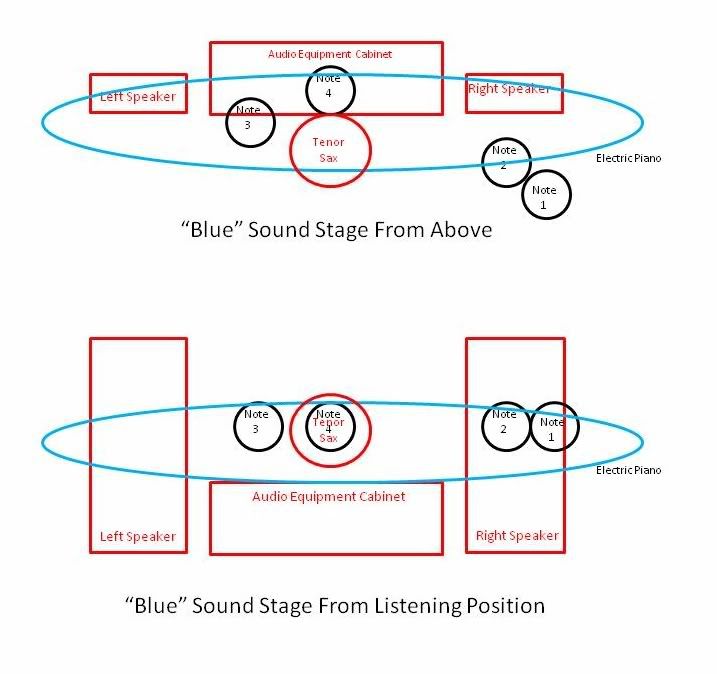
Figure 11. Sound stage charts for Boney James' "Blue" ("Backstreet" CD).
Overall, the biggest improvement was in the SACD player's bass. It was heavier, more tactile, more articulate, and had more subtle shadings (rumble, growl). Although the improvements brought to the SACD player were easily heard, they were not of the same degree as those heard with the fuse replacements in other components. Going from most to least, the degree of improvement by component was:
1. Phono preamp power line fuse.
2. Line level preamp power line fuse.
3. Power amp power line fuse.
4. Power amp rail fuses.
5. SACD power line fuses.
Teres Audio Reference II Motor Power Supply
I had already taken measures to reduce the electrical and mechanical (vibration) noise in my turntable setup:
1. Upgraded the motor to the Teres Audio Reference II motor with optional Bybee power line noise filters.
2. PS Audio Power Plant Premier AC regenerator.
3. Black Diamond Racing Jumbo Pits vibration damping devices.
4. DIY Acid-Etched Holographic Mylar Belt.
5. Sonic Purity Concepts and Design "The Clamp" heavy duty reflex record clamp.
As noted here, I had reduced my turntable's stroboscopically measurable speed deviation to zero and had realized the following performance improvements:
1. The noise floor was lowered as evidenced by an apparent increase in sound level (the sound level meter showed the same absolute sound level).
2. More detail overall.
3. Heavier images.
4. More bass impact.
5. A little more depth in the sound stage.
6. An enhanced sense of 3-dimensionality.
I did not hold out much hope of hearing further improvements from the turntable motor after the power supply fuse was changed...but you never know until you try. The dealer I bought the fuses from offers a 14 day return, therefore I would only be on the hook for shipping charges if they didn't work out.
I heard an improvement when I replaced the power supply's stock power cord with a Signal Cable MagicPower cord. I did not hear a difference or improvement when I replaced the MagicPower cord ($74-10AWG copper) with a much higher quality PS Audio xStream Premier SC power cord ($1,394-7AWG silver/copper).
The following Tracks and LP's were used in this evaluation:
1. "The Lady In My Life", "Magic Touch" LP, Stanley Jordan.
2. "Angel", "Magic Touch" LP, Stanley Jordan.
3. "This Masquerade", "Breezin'" LP, George Benson.
4. "Ruby, Ruby, Ruby", "12" LP, Bob James.
5. "Midnight", "12" LP, Bob James.
6. "Angela (Theme From "Taxi")", "Touchdown" LP, Bob James.
I first listened to "The Lady In My Life" with the stock fuse, then popped in the HiFi Tuning fuse...then my ears began playing tricks on me.:eek: The tricks weren't subtle and they weren't big. The tricks were small, but appreciated:
1. Lowered noise floor as evidenced by apparently louder sound.
2. Heavier images, particularly bass images.
3. More detail overall.
4. Image placement and sound stage dimensions did not change. However, there was a greater sense of 3-dimensionality.
5. More sustain and decay on guitar and piano notes.
6. Enhanced subtle rumble from bass guitar.
On Bob James' "Midnight", shortly after the song begins, there is a percussion sound centered on the right speaker that sounds like a mixture of several tambourines and running water. With the HiFi Tuning fuse, the running water sounds are more distinct from the tambourine sounds.
Stanley Jordan's and George Benson's guitars acquired more body and a little thicker, a little more liquid tone.
Further Study
Since audio grade fuses brought Such Good Sound to my two channel system, I began Noise study 8, which will investigate the effects of audio grade fuses in the lower resolution, upper mid-fi equipment in my home theater system.
Denzel tried to hide his excitement after learning that audio grade fuses were coming to the SDA Shrine Theater.Proud and loyal citizen of the Digital Domain and Solid State Country! -
DK - another great review. I even understood most of it! In my Magnepan 1.6's I replaced the tweeter fuses with some cryo'd ceramic fuses, and noticed a nice improvement in the sound of the quasi-ribbon tweeters. It seemed to smooth out the sound and provide greater width in the soundstage. I've always been curious as to whether the HiFi Tuning fuses would work in this application. Any thoughts on this?DKG999
HT System: LSi9, LSiCx2, LSiFX, LSi7, SVS 20-39 PC+, B&K 507.s2 AVR, B&K Ref 125.2, Tripplite LCR-2400, Cambridge 650BD, Signal Cable PC/SC, BJC IC, Samsung 55" LED
Music System: Magnepan 1.6QR, SVS SB12+, ARC pre, Parasound HCA1500 vertically bi-amped, Jolida CDP, Pro-Ject RM5.1SE TT, Pro-Ject TubeBox SE phono pre, SBT, PS Audio DLIII DAC -
I have never tried a fuse upgrade in speakers. From what I have read, speakers seem to benefit least, if at all, from fuse upgrades.
The only way you'll know is to try it. Since you have already realized a nice improvement with cryoed ceramic fuses, a higher quality audio grade fuse might provide additional benefit. BTW, the HiFi Tuning fuses are cryo treated. I don't know if the Isoclean fuses are cryoed. Their literature does not mention it.Proud and loyal citizen of the Digital Domain and Solid State Country! -
DarqueKnight wrote: »Cary CD 306 SACD Professional Version
Cary Audio graciously allowed me to replace the power line fuses in my CD 306 PV SACD player without voiding the warranty. The two stock fuses (2A/250V and 0.5A/250V) were replaced with HiFi Tuning Silver/Gold audio grade fuses. The correct orientation was determined by testing for continuity between the blades of the IEC socket and the fuse holder clips.
Once proper orientation was determined, I listened to the fuses oriented the wrong way then the right way. Listening with the fuses oriented wrong resulted in a contraction of sound stage depth and width. Overall, even oriented the wrong way, the HiFi Tuning fuses still sounded better than the stock fuses. The noise floor was a little lower and overall detail was a little better.
When the fuses were oriented the right way, sound stage depth and width returned to normal. Although now, the noise floor was lower than with the fuses in the wrong orientation. Image weight and overall detail increased, particularly at the sides of the sound stage.
Figure 11 shows the sound stage charts for the song "Blue" from Boney James' "Backstreet" CD. The soundscape consists of only two instruments: an electric piano and a tenor saxophone. The piano is miked to stretch all the way across the sound stage (blue oval). The song starts off with four low-pitched, heavy sounding piano notes suspended in three-dimensional space. Boney James begins his sax solo after the four intro notes and is accompanied by the piano for the rest of the song. The saxophone is close miked, therefore key noise is clearly heard, particularly on rapid passages.
After installing the HiFi tuning fuses, the following differences were heard:
1. The "clicks" of the saxophone keys were a bit clearer and louder.
2. The reverberant envelopes around electric piano and saxophone notes were a little more defined.
3. The sound of air rushing through the saxophone mouthpiece was louder and more clearly defined.
4. The piano's low notes were heavier sounding and provided more tactile sensation.
5. The piano notes at the sides of the sound stage were heavier and more clearly defined.
6. Sound level apparently a little louder due to lower noise floor.
Figure 11. Sound stage charts for Boney James' "Blue" ("Backstreet" CD).
Overall, the biggest improvement was in the SACD player's bass. It was heavier, more tactile, more articulate, and had more subtle shadings (rumble, growl). Although the improvements brought to the SACD player were easily heard, they were not of the same degree as those heard with the fuse replacements in other components. Going from most to least, the degree of improvement by component was:
1. Phono preamp power line fuse.
2. Line level preamp power line fuse.
3. Power amp power line fuse.
4. Power amp rail fuses.
5. SACD power line fuses.
Teres Audio Reference II Motor Power Supply
I had already taken measures to reduce the electrical and mechanical (vibration) noise in my turntable setup:
1. Upgraded the motor to the Teres Audio Reference II motor with optional Bybee power line noise filters.
2. PS Audio Power Plant Premier AC regenerator.
3. Black Diamond Racing Jumbo Pits vibration damping devices.
4. DIY Acid-Etched Holographic Mylar Belt.
5. Sonic Purity Concepts and Design "The Clamp" heavy duty reflex record clamp.
As noted here, I had reduced my turntable's stroboscopically measurable speed deviation to zero and had realized the following performance improvements:
1. The noise floor was lowered as evidenced by an apparent increase in sound level (the sound level meter showed the same absolute sound level).
2. More detail overall.
3. Heavier images.
4. More bass impact.
5. A little more depth in the sound stage.
6. An enhanced sense of 3-dimensionality.
I did not hold out much hope of hearing further improvements from the turntable motor after the power supply fuse was changed...but you never know until you try. The dealer I bought the fuses from offers a 14 day return, therefore I would only be on the hook for shipping charges if they didn't work out.
I heard an improvement when I replaced the power supply's stock power cord with a Signal Cable MagicPower cord. I did not hear a difference or improvement when I replaced the MagicPower cord ($74-10AWG copper) with a much higher quality PS Audio xStream Premier SC power cord ($1,394-7AWG silver/copper).
The following Tracks and LP's were used in this evaluation:
1. "The Lady In My Life", "Magic Touch" LP, Stanley Jordan.
2. "Angel", "Magic Touch" LP, Stanley Jordan.
3. "This Masquerade", "Breezin'" LP, George Benson.
4. "Ruby, Ruby, Ruby", "12" LP, Bob James.
5. "Midnight", "12" LP, Bob James.
6. "Angela (Theme From "Taxi")", "Touchdown" LP, Bob James.
I first listened to "The Lady In My Life" with the stock fuse, then popped in the HiFi Tuning fuse...then my ears began playing tricks on me.:eek: The tricks weren't subtle and they weren't big. The tricks were small, but appreciated:
1. Lowered noise floor as evidenced by apparently louder sound.
2. Heavier images, particularly bass images.
3. More detail overall.
4. Image placement and sound stage dimensions did not change. However, there was a greater sense of 3-dimensionality.
5. More sustain and decay on guitar and piano notes.
6. Enhanced subtle rumble from bass guitar.
On Bob James' "Midnight", shortly after the song begins, there is a percussion sound centered on the right speaker that sounds like a mixture of several tambourines and running water. With the HiFi Tuning fuse, the running water sounds are more distinct from the tambourine sounds.
Stanley Jordan's and George Benson's guitars acquired more body and a little thicker, a little more liquid tone.
Further Study
Since audio grade fuses brought Such Good Sound to my two channel system, I began Noise study 8, which will investigate the effects of audio grade fuses in the lower resolution, upper mid-fi equipment in my home theater system.
Denzel tried to hide his excitement after learning that audio grade fuses were coming to the SDA Shrine Theater.
I have no clue what your talking about .....but again, what an awesome H/T & what a beautiful room! Polk Audio Surround Bar 360
.....but again, what an awesome H/T & what a beautiful room! Polk Audio Surround Bar 360
Mirage PS-12
LG BDP-550
Motorola HD FIOS DVR
Panasonic 42" Plasma
XBOX 360[/SIZE]
Office stuff
Allied 395 receiver
Pioneer CDP PD-M430
RT8t's & Wharfedale Diamond II's[/SIZE]
Life is one grand, sweet song, so start the music. ~Ronald Reagan -
^^^LOL.:)
This reminds me of a conversation I had with a friend who called while I was doing listening evaluations:
Friend: What are you doing?
Me: I was changing the fuse in my turntable motor power supply.
Friend: Did you get hit by lightning? I thought you had all kinds of lightning protection stuff.
Me: No. I didn't get hit by lightning. I am trying an audio grade fuse to see if the sound improves. I'm switching between the stock and new fuse and noting the differences with different music.
Friend: How would the sound improve by changing the fuse in the motor power supply? That's far away from the motor and far away from the cartridge and arm.
[Note: This friend is an electrical engineer with a master's in computer science. He also plays guitar and keyboards.]
Me: Why don't you come over and hear for yourself?
Friend: That's ok. You've got me in enough trouble ($$$) listening to your stuff. How much do those things cost? Knowing you, they ain't cheap.
Me: We can talk about that later.Proud and loyal citizen of the Digital Domain and Solid State Country! -
Raife,
My A21 Halo amp has a fuse cap. Which way is the proper orientation to install a replacement fuse?Carl -
My A21 Halo amp has a fuse cap. Which way is the proper orientation to install a replacement fuse?
I don't know. You would have to test to be sure. Usually, current flow is in the direction toward the fuse cap. This is the way it is on my JC 1's and my Pass Labs preamps.
To be sure, you need to test for continuity between the line side blade of the IEC socket and the end of the fuse holder and the part of the fuse holder that contacts the far end of the fuse cap. Whichever of these has continuity with the line side IEC blade is where the AC enters the fuse holder. You want the fuse arrow to point away from the point where AC enters the fuse holder.
As you are looking at the IEC socket, the line side blade is the one on the bottom right if the angled sides of the socket are oriented upward.
For fun, you should compare the stock fuse, the audio grade fuse oriented the wrong way and the audio grade fuse oriented the right way.Proud and loyal citizen of the Digital Domain and Solid State Country! -
CORRECTION: The line side blade is the one on the bottom left if the angled sides of the socket are oriented upward and if you are looking at it from the the outside rear panel of the amp. I am used to looking at these things from the inside of the rear panel.
 Proud and loyal citizen of the Digital Domain and Solid State Country!
Proud and loyal citizen of the Digital Domain and Solid State Country! -
All of this tweaking yet you have placed that rather obtruse black box smack dab in the middle of things.
Quite distracting for me.
RT1 -
These look like a good deal. http://www.dedicatedaudio.com/inc/sdetail/16482SDA-2BTL with custom IC
Adcom 565 monoblocks--Monarchy Audio M-10 preamp
Theta Data Basic Transport--Stello DA100 Signature DAC--Camelot Dragon Pro2 MK III
Harman Kardon T-55c TT
DH Labs Q-10 Signature Speaker Cables With Furez silver plated copper bananas
Revelation Audio Labs Prophecy Cryo-Silver Reference AES/EBU
Revelation Audio Labs Prophecy Cryo-Silver i2s digital cable
4 Furutech FP-314Ag with FI-11cu Plugs/FI-11AG IECs--- Power Cords
DH LABS REVELATIONS ICs-amps
Revelation Audio Labs Paradise cryo-silver ICs-Source to pre -
Introduction
Just as power cord changes have become a standard tweak for components in my two channel audio and home theater systems, power line fuse replacement has become a standard tweak as well. An Adcom GCD-750 CD player was my digital source for several years. I keep it around for cable break in and other test and evaluation purposes. As noted in post #2 of this thread, unfortunate circumstances resulted when I replaced my Cary SACD player with the Adcom CD player. I wanted to hear if a fuse replacement in the Adcom would make things more tolerable. It did. Hotrodding the GCD-750 with a lower jitter master clock is also on my ever lengthening list of projects.
Figure 1. An old pal becomes a better version of itself through noise reduction science.
Figure 2. The GCD-750 has a simple, elegant board layout which is ideal for modding.
Figure 3. After a simple fuse replacement, wonderful things began to happen.
The Sound
Usually, when I put the GCD-750 back into my two channel system (for cable break in, etc.), I can't wait to take it out and go back to my Cary CD 306 Professional Version SACD player ($8,000 MSRP). Of course, the Adcom ($1500 MSRP) does not have the detail and other sonic attributes of the Cary, but listening to it became a more pleasant experience after the fuse upgrade.
I noted in the second post of this thread that the following detrimental changes occurred when I replaced the Cary with the Adcom:
1. Significant loss of tactile bass.
2. Bass growls were blurred. Rather than electric bass notes with the throaty, well defined rumble of a tiger's growl, the electric bass notes were now more similar to stomach rumblings.
3. Overall detail was diminished.
4. Sound stage depth and width significantly shrank (by 3 feet all around).
5. Bass seemed slower.
After replacing the Adcom's stock fuse with the HiFi Tuning fuse, all of the detriments noted above were still evident, but they were much, much lesser in degree. For example, going from the Cary to the Adcom resulted in a severe reduction in sound stage dimensions, but replacing the Adcom's stock fuse with the HiFi Tuning fuse restored 2/3's of the Cary's sound stage size. The charts below show how the sound stage relaxed and spread out after the fuse change.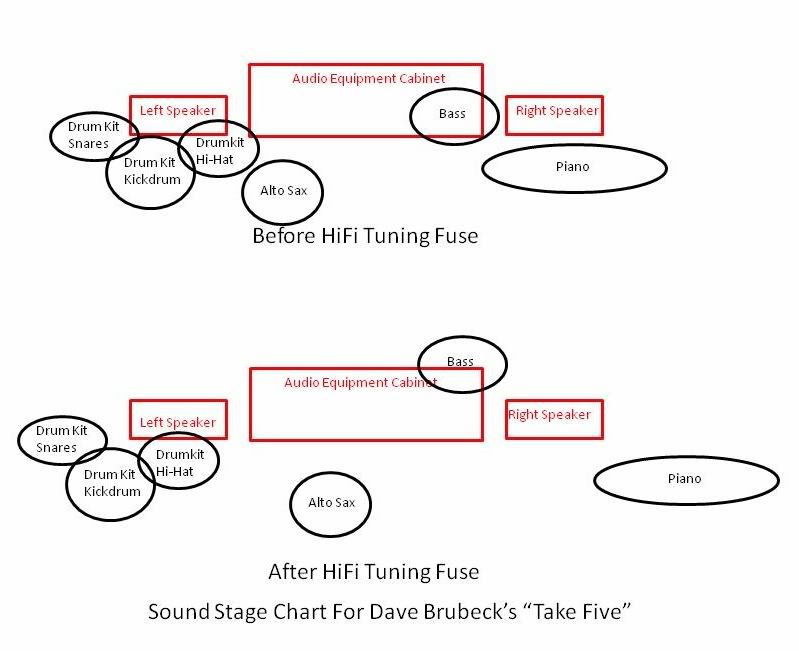
Figure 4. Adcom GCD-750 sound stage change after fuse upgrade.
Figure 5. Adcom GCD-750 sound stage change after fuse upgrade.
Bear in mind that this fuse change came behind many other noise reduction enhancements and actually facilitated the Adcom being able to take better advantage of those prior enhancements.Proud and loyal citizen of the Digital Domain and Solid State Country! -
Hello,
Do you remember how to place properly two HiFi Tuning fuses in the Cary Audio CD 306 SACD (not professional version)? I have a simple picture with various options but unfortunately I cannot attach it to this message. If tou will be able please send me a private message with an email contact. Thanks in advance! -
The above request is to DarqueKnight:)
-
Great review DarqueKnight!
I am glad the ney sayers are asleep.
Maybe on another forum preaching snake oil
I tried an Isoclean in my Atoll pre but it was not the best match.
Then I tried a Cryoparts which was alittle better.
Then a Furutech, and have to say, it is a match made in audio heaven!
I tried several different brands in my amp, and the Acme was the better of the bunch there (really good match).
Goes to show, every link is system dependant, and mileage will vary.
Not having tried the HiFi's, I can't comment, but I will say in my system the fuses were well worth the money, and I will NEVER go back to stock.
I think for the money ($10/ea.), the Acmes are a great bargain, and should be a good starting point for anyone wanting to try the upgrade.
There is a "Fuse Shootout" floating around on the net, and I believe the Acmes won.
Disclaimer: I am not affiliated with Acme.Testing
Testing
Testing -
Hello,
Do you remember how to place properly two HiFi Tuning fuses in the Cary Audio CD 306 SACD (not professional version)? I have a simple picture with various options but unfortunately I cannot attach it to this message. If tou will be able please send me a private message with an email contact. Thanks in advance!
I don't recall that I changed the fuses in my CD 306 SACD. I don't even recall ever taking the top cover off. I looked back through my notes regarding the CD 306 and there is no mention of changing fuses.
I would not be able to tell the correct orientation just from looking at pictures.
The correct orientation is easy enough to find (if you have a multimeter) using the method in Post #12 of this thread.
Alternatively, if you are accustomed to listening to these types of things, the correct orientation can be found by listening. One orientation should sound better than the other. Although, some people have reported that they preferred the sound with the "wrong" orientation.I tried an Isoclean in my Atoll pre but it was not the best match.
Then I tried a Cryoparts which was alittle better.
Then a Furutech, and have to say, it is a match made in audio heaven!
I tried several different brands in my amp, and the Acme was the better of the bunch there (really good match).
Goes to show, every link is system dependant, and mileage will vary.
Not having tried the HiFi's, I can't comment, but I will say in my system the fuses were well worth the money, and I will NEVER go back to stock.
I applaud you for looking until you found something you liked and for not stopping at one thing that didn't work and then forever bashing an entire field of merchandise. Proud and loyal citizen of the Digital Domain and Solid State Country!
Proud and loyal citizen of the Digital Domain and Solid State Country! -
DarqueKnight thank you for explanation and information. Probably I've made mistake thinking that you looked inside the CD 306 in the past. Sorry for this wrong assumption!
And again thanks for your indication how to find out about a proper fuse placement in general:)
Best wishes:) -
Wit64,
One important thing you should be aware of, is that opening the case of a CD 306 SACD will immediately void the warranty if you do not get prior approval from Cary Audio. As I mentioned in this thread, I obtained approval from Cary prior to opening the case of my CD 306 PV since my unit was still in warranty. When I needed to return my CD 306 PV for service, I included a copy of the email which authorized me to remove the stickers and change the fuses.
If you don't already know, the case top retaining screws are accessed from two holes at the bottom rear corners of the unit. These holes are covered (or should be covered) by a warning sticker stating that removing the sticker voids the warranty. If you remove the sticker, it peels off in pieces similar to the way.
You will need a #1, 7" long magnetic Phillips screw driver to reach the tiny screws at the top of the case. You will also need a steady hand and patience to reinsert the screws. Some people found that the CD 306 and CD 306 PV sounded marginally more open and detailed without the case top screws back in. I never did a back and forth comparison with my CD 306 PV. I did not reinstall the screws after changing the CD 306 PV's fuses. The case top is neatly secured at the rear corners with strong packing tape. I did this because I did not want to go through the drama involved in replacing the screws should I need access to the inside again.Proud and loyal citizen of the Digital Domain and Solid State Country! -
Truly, we are all nuts.DarqueKnight wrote: »Some people found that the CD 306 and CD 306 PV sounded marginally more open and detailed without the case top screws back in. Steve Carlson
Steve Carlson
Von Schweikert VR-33 speakers
Bel Canto eVo2i integrated amp
Bel Canto PL-2 universal disc player
Analysis Plus Oval Nine speaker cables and Copper Oval-In Micro interconnects
VH Audio Flavor 4 power cables
Polk Monitor 10B speakers, retired but not forgotten -
DarqueKnight wrote: »
I never did a back and forth comparison with my CD 306 PV. I did not reinstall the screws after changing the CD 306 PV's fuses. The case top is neatly secured at the rear corners with strong packing tape. I did this because I did not want to go through the drama involved in replacing the screws should I need access to the inside again.
Yes you are right. It was very tiresome to remove the top cover from CD 306. I am a second owner of this CD player, so there is no problem with warranty fortunately. The fuses have been changed to Hi-Fi Tuning Silver Star - not gold. Probably it needs some time to get a best performance from them. However, in general from the beginning the sound seems to be better: clearer, better bas definition, silky higs...
DarqueKnight thanks again for your help!
Best wishes
-
DarqueKnight wrote: »Some people found that the CD 306 and CD 306 PV sounded marginally more open and detailed without the case top screws back in.Truly, we are all nuts.

Well, in this case, I think they were on to something and not just on something.
I didn't notice any difference with the case top screws out, but, as I said, I didn't go through the grief of doing back and forth comparisons. I might have heard a difference if I had not installed vibration abatement treatments a few months prior to doing the fuse upgrades (vibration abatement discussion for CD 306 PV here).
I think the differences that others heard may have been due to some loss of case resonance with the top not screwed down at the rear. The CD 306 and CD 306 PV have thick aluminum case tops with tabs along the front edge that slide into groves along the top rear edge of the face plate and only two screws that secure the rear corners. There are no screws along the sides.Proud and loyal citizen of the Digital Domain and Solid State Country! -
I am considering removing the fuses from my SL backplates....other SL owners keep reporting a marked improvement.
It would seem intuitive if no fuse is better than a fuse then a quality fuse is better than a poor fuse. I am presently experimenting a bit with mid-line fuses of lesser value than specified, however, preliminary finding is too early to even discuss.
As always Ray your work is shown to reach out to the audio hobbiest.
RT1 -
Inside the Parasound Halo A 21 are four 8A fuses. If one wished to replace them with better parts how would one go about determining the proper orientation of the fuses?
DarqueKnight, you might want to look inside the JC 1 to see if the rails are protected by fuses.
For fuses installed on the main circuit board, as with my Herron VTPH-2, how does one determine the direction of current flow, and thus the proper orientation of the fuse in the fuse holder? -
what a read! thanks DK! now, that hot rod fuses are on the must-do list, i have to figure just how many i need...thanks alot!;)
-
curbfeeler wrote: »Inside the Parasound Halo A 21 are four 8A fuses. If one wished to replace them with better parts how would one go about determining the proper orientation of the fuses?
DarqueKnight, you might want to look inside the JC 1 to see if the rails are protected by fuses.
For fuses installed on the main circuit board, as with my Herron VTPH-2, how does one determine the direction of current flow, and thus the proper orientation of the fuse in the fuse holder?
I would think the best way to determine current flow is by looking at the schematic and tracing the (+) and (-) rails.
What other way would their be?
H9"Appreciation of audio is a completely subjective human experience. Measurements can provide a measure of insight, but are no substitute for human judgment. Why are we looking to reduce a subjective experience to objective criteria anyway? The subtleties of music and audio reproduction are for those who appreciate it. Differentiation by numbers is for those who do not".--Nelson Pass Pass Labs XA25 | EE Avant Pre | EE Mini Max Supreme DAC | MIT Shotgun S1 | Puritan Audio PSM136 Pwr Condtioner & Classic PC's | Legend L600 | Roon Nucleus 1 w/LPS - Tubes add soul! -
curbfeeler wrote: »Inside the Parasound Halo A 21 are four 8A fuses. If one wished to replace them with better parts how would one go about determining the proper orientation of the fuses?
Welcome to Club Polk.
This is easy because everything after the power supply operates on DC. Use a digital DC voltmeter to determine polarity. Place the positive voltmeter probe (usually red) on one of the fuse holder clips and the negative probe (usually black) on the other. The positive fuse holder end is identified by whichever clip the positive probe is connected to that does not give a negative reading (minus sign (-) showing up) on the voltmeter display. The fuse arrow should point away from the positive holder end.
Of course, since your amplifier must be turned on for this test, extreme caution should be exercised and you should used insulated probes. I used insulated alligator clip probes for this.curbfeeler wrote: »For fuses installed on the main circuit board, as with my Herron VTPH-2, how does one determine the direction of current flow, and thus the proper orientation of the fuse in the fuse holder?
If the fuse is in the circuit after the power supply, it is passing DC and you can use the method I described above. If the fuse is on the power supply section of the main board between the power cord wires and the power supply, it is passing AC. Disconnect power and test for continuity (short condition) between the line (hot) wire and each of the fuse holder ends. When the meter beeps indicating a short, that is the positive fuse holder end. The fuse arrow should point away from that fuse holder end.curbfeeler wrote: »DarqueKnight, you might want to look inside the JC 1 to see if the rails are protected by fuses.
Yes, there are two rail fuses in the JC 1. I mentioned this in last sentence of the first section of post #2 and in the first sentence of the quantitative analysis section of post #2:DarqueKnight wrote: »Replacing the JC 1 power amp's 1A stock wire filament rail fuses resulted in a further widening of the sound stage by two feet, a further lowering of the noise floor, and a small increase in detail and image weight.DarqueKnight wrote: »A total of 16 fuses (8 stock fuses and 8 audio grade replacements) were evaluated: a 12A power line and two 1A rail fuses in each of the JC 1 power amps and 0.5A power line fuses in the Pass Labs X0.2 and Xono preamps.
(Stuff is easy to miss in these long, long, long reports. )I would think the best way to determine current flow is by looking at the schematic and tracing the (+) and (-) rails.
)I would think the best way to determine current flow is by looking at the schematic and tracing the (+) and (-) rails.
What other way would their be?
I tried to order a service manual from Parasound. They informed me that service manuals are proprietary information and are only released to authorized Parasound service centers.:frown:Proud and loyal citizen of the Digital Domain and Solid State Country! -
Thanks for the warm welcome. I placed Furutech fuses everywhere on the A 21, the JC 2 and JC 3. I asked Furutech if the fuses are directional, and they replied that they are not. Perhaps that is so, perhaps not. I used HiFi Tuning Supreme fuses on the Herron VTPH-2 and the Bryston BDA-1. I'll check the direction of current flow per your guidance. Since replacing the fuses I have been startled at times by what I've heard.




